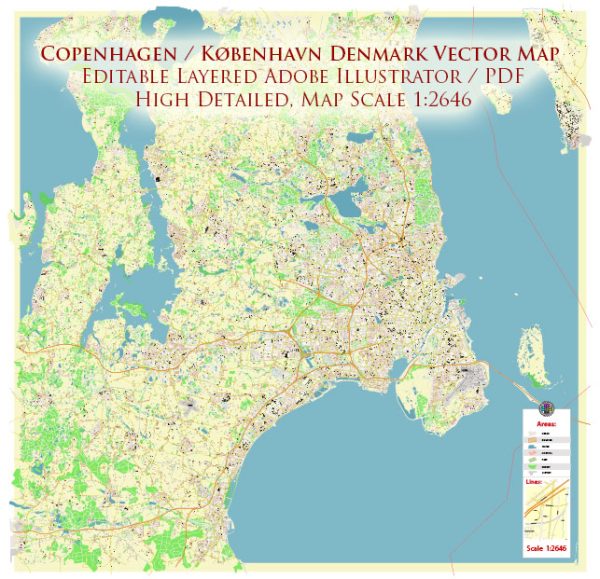Copenhagen, known as København in Danish, is the capital and largest city of Denmark. Its history is rich and spans over a thousand years. Here’s an overview of the historical development of Copenhagen:
- Medieval Origins: Copenhagen’s history dates back to the 12th century when it was founded as a fishing village. The city’s name, “København,” is believed to have originated from “Købmandehavn,” which means “merchant’s harbor.” It grew as a trading post and gradually developed into a fortified city.
- The Kalmar Union: In the late 14th century, Copenhagen became the capital of Denmark. During the Kalmar Union (1397-1523), a political union that included Denmark, Norway, and Sweden, the city became an important political and administrative center.
- Reformation and Absolutism: In the 16th century, the Reformation reached Copenhagen, and it became a center for Lutheranism. Later, under the reign of King Christian IV (1588-1648), the city underwent significant expansion and transformation. The famous Round Tower (Rundetårn) and Rosenborg Castle were built during this time.
- War and Fire: The 17th century saw Copenhagen endure a series of conflicts and fires. The most significant of these was the assault by the Swedish army in 1659. The city was besieged and partially burned, but it managed to fend off the attack.
- 18th Century Enlightenment: The 18th century marked a period of enlightenment and cultural growth in Copenhagen. The Royal Theater and the Royal Academy of Fine Arts were founded during this time. The city’s architectural heritage, including the Amalienborg Palace and the Frederik’s Church (popularly known as the Marble Church), also dates from this period.
- Napoleonic Wars: In the early 19th century, Copenhagen found itself under British attack in 1807 during the Napoleonic Wars. The British Royal Navy bombarded the city, leading to the surrender of the Danish-Norwegian fleet.
- Constitutional Monarchy: Denmark gradually transitioned into a constitutional monarchy during the 19th century, with the adoption of a democratic constitution in 1849.
- Industrialization and Growth: The late 19th and early 20th centuries brought industrialization to Copenhagen, and the city’s population boomed. The Tivoli Gardens, an amusement park, opened in 1843 and became a symbol of the city’s leisure culture.
- World War II: During World War II, Copenhagen was occupied by Nazi Germany from 1940 to 1945. The Danish resistance movement played a significant role in opposing the occupation.
- Modern Era: Copenhagen continued to grow and modernize after the war. It became known for its urban planning, bike-friendly infrastructure, and focus on sustainability. The city hosted the United Nations Climate Change Conference (COP15) in 2009.
Today, Copenhagen is known for its rich history, a blend of modern and historic architecture, a strong focus on sustainability, and a high quality of life. It’s also a cultural hub with a vibrant arts scene, museums, and a reputation for design and culinary excellence. The city remains the political, economic, and cultural heart of Denmark.


 Author: Kirill Shrayber, Ph.D.
Author: Kirill Shrayber, Ph.D.